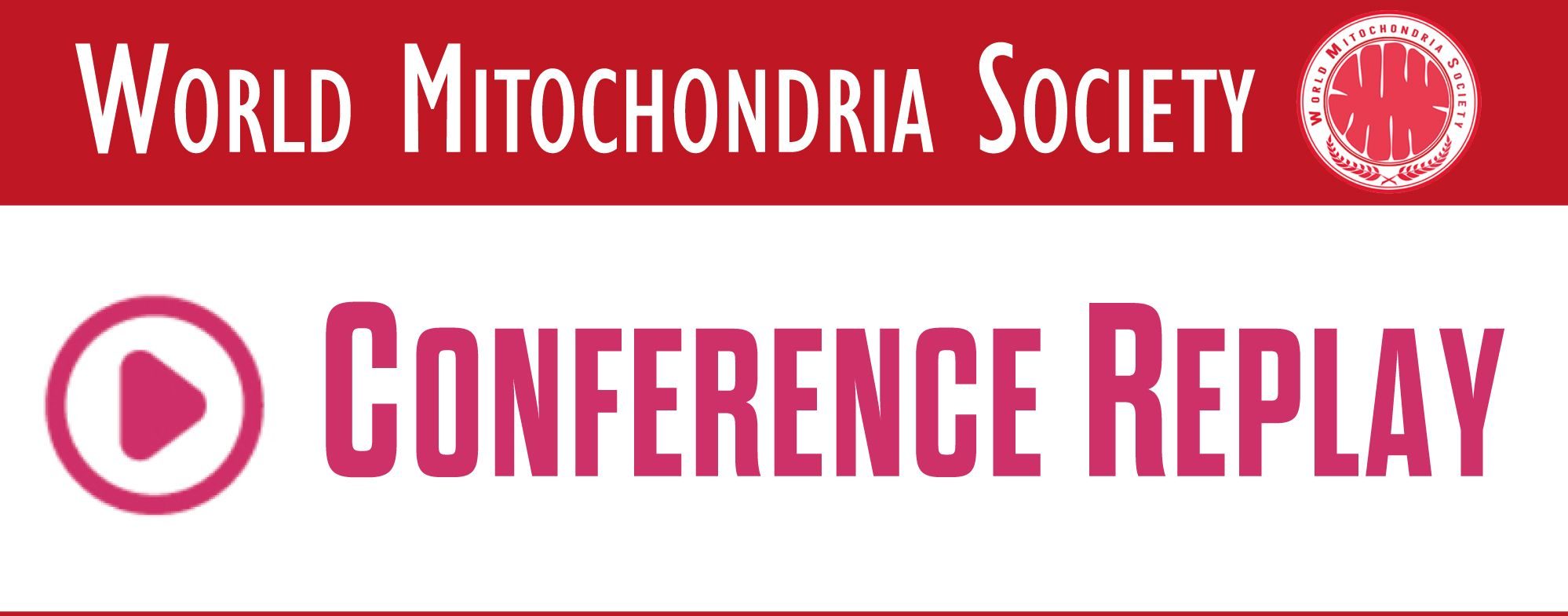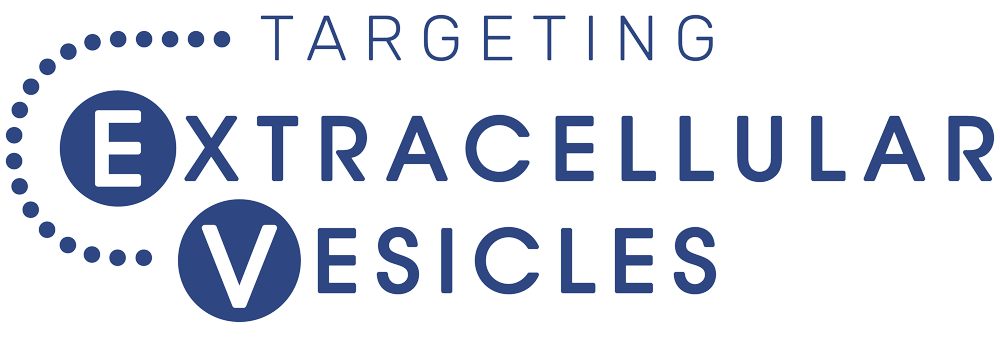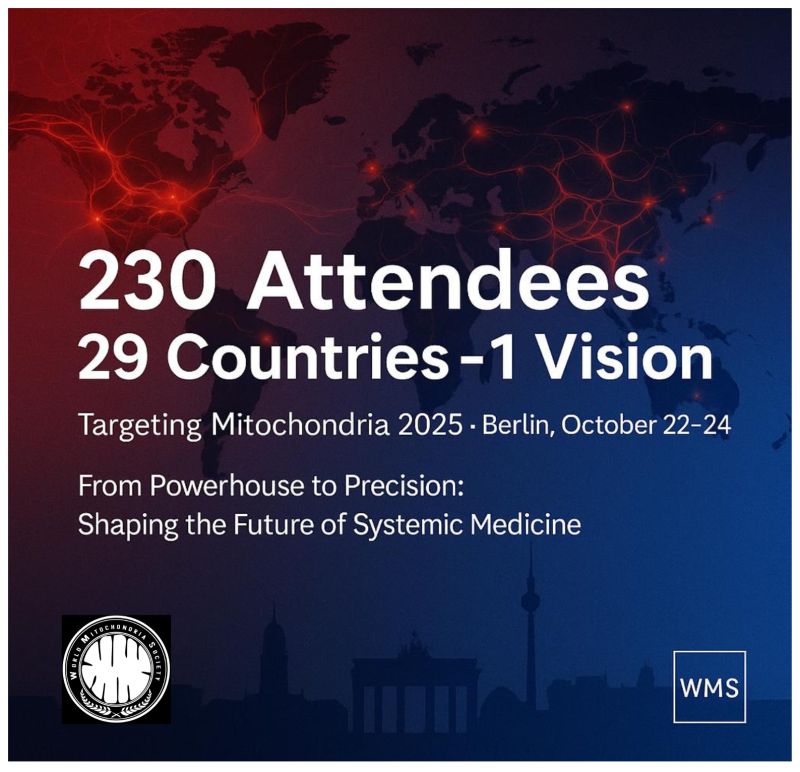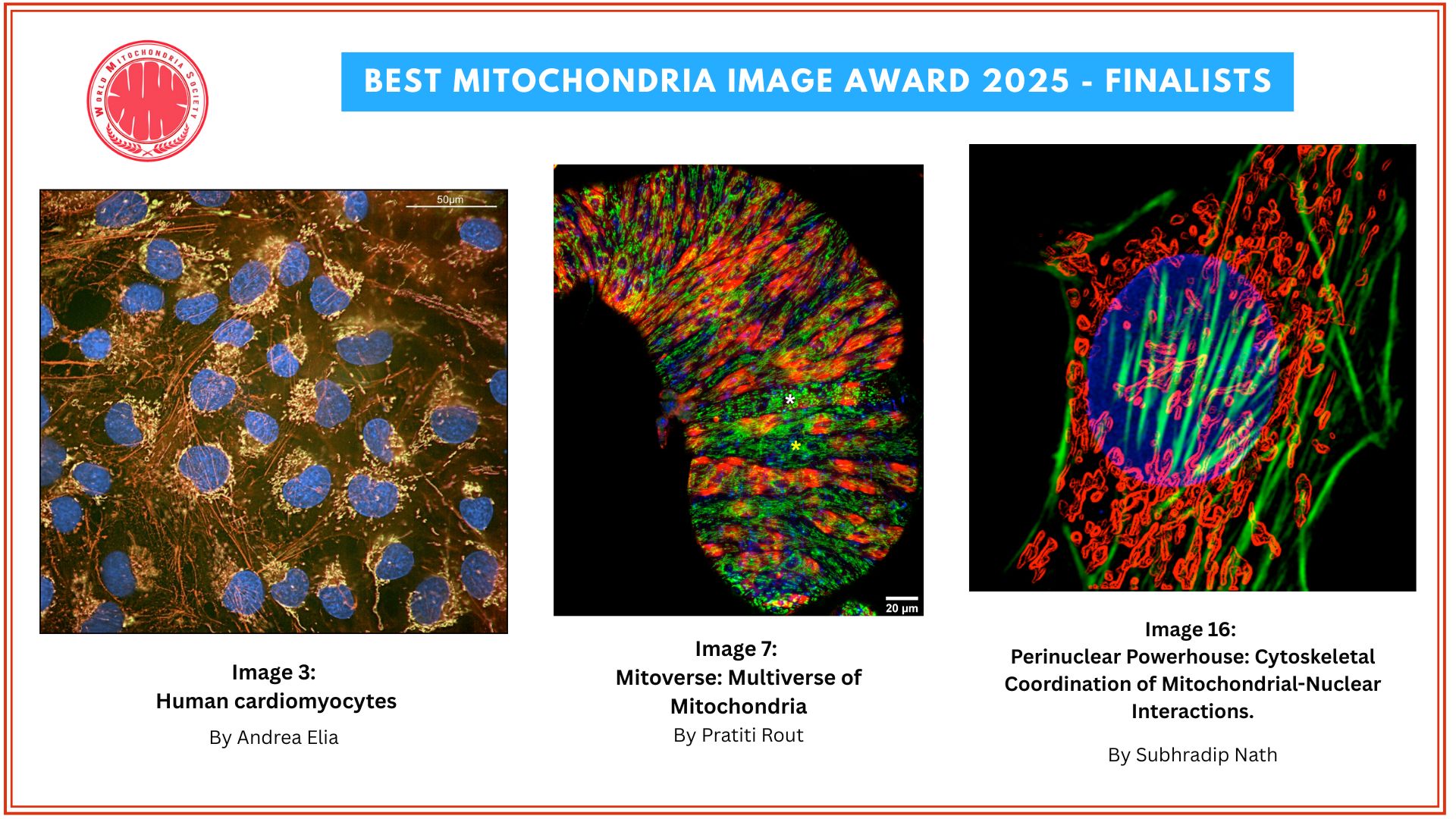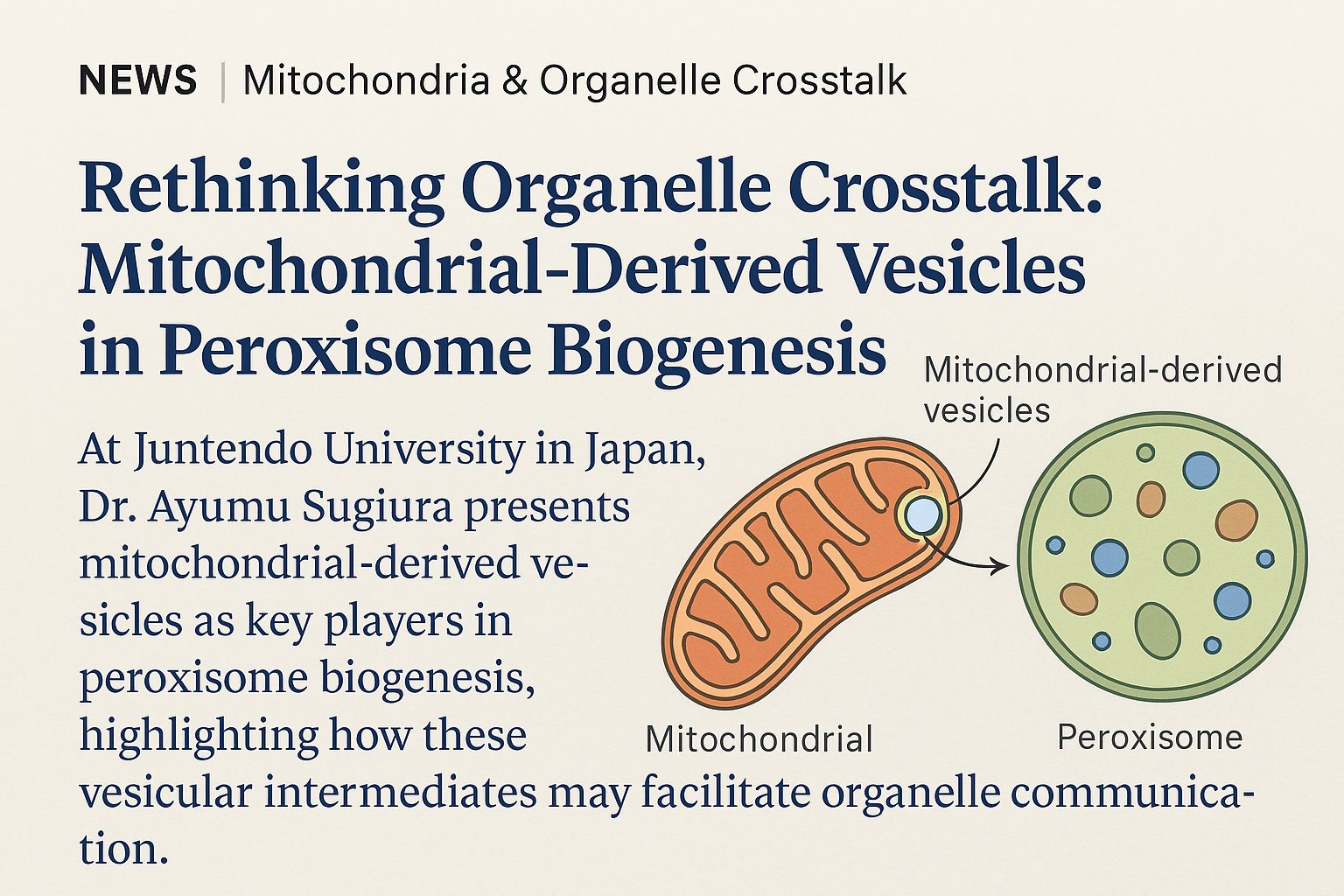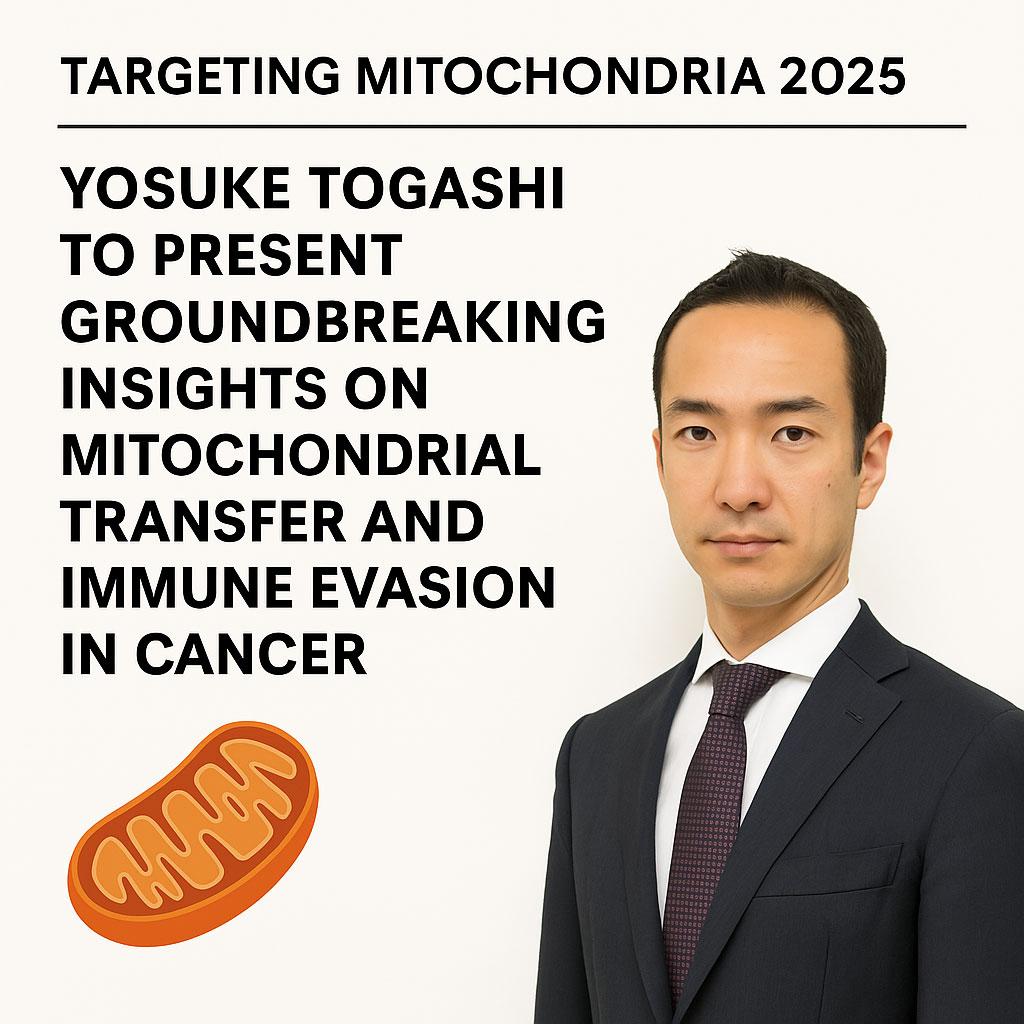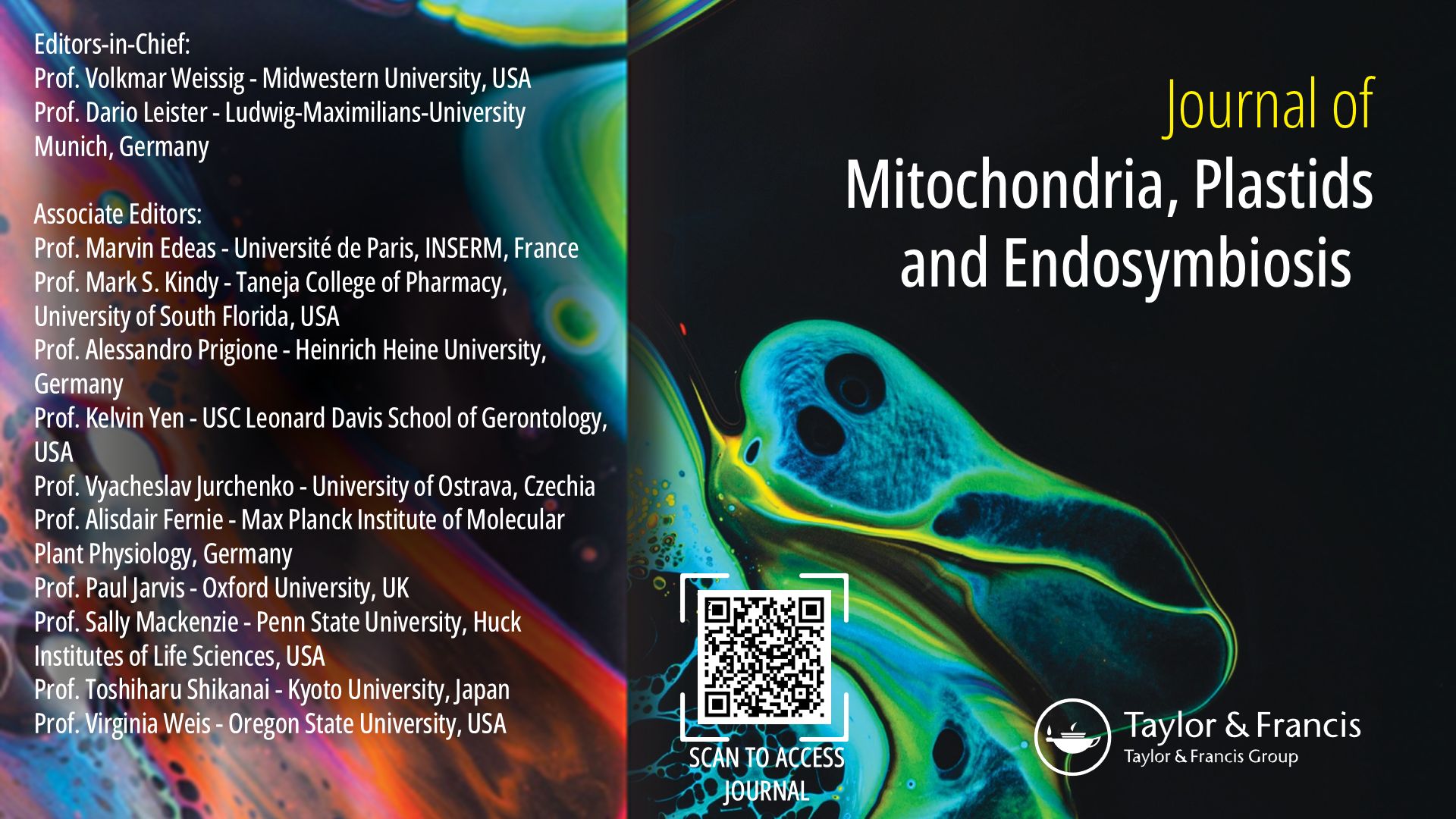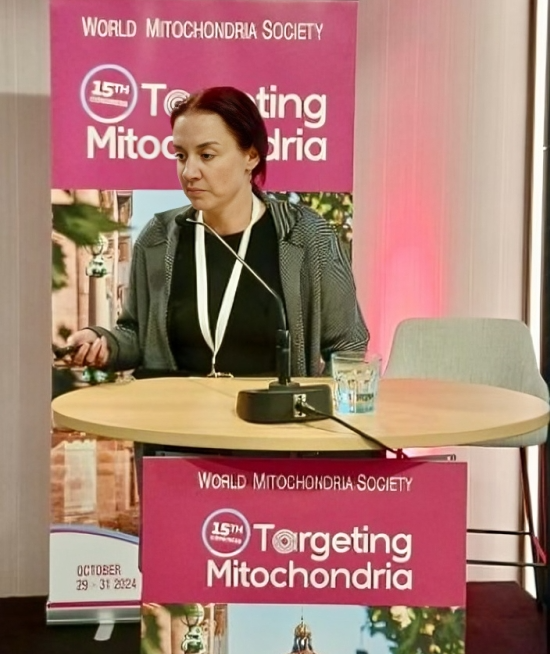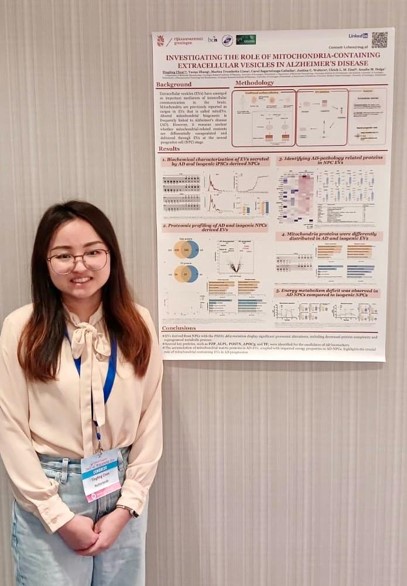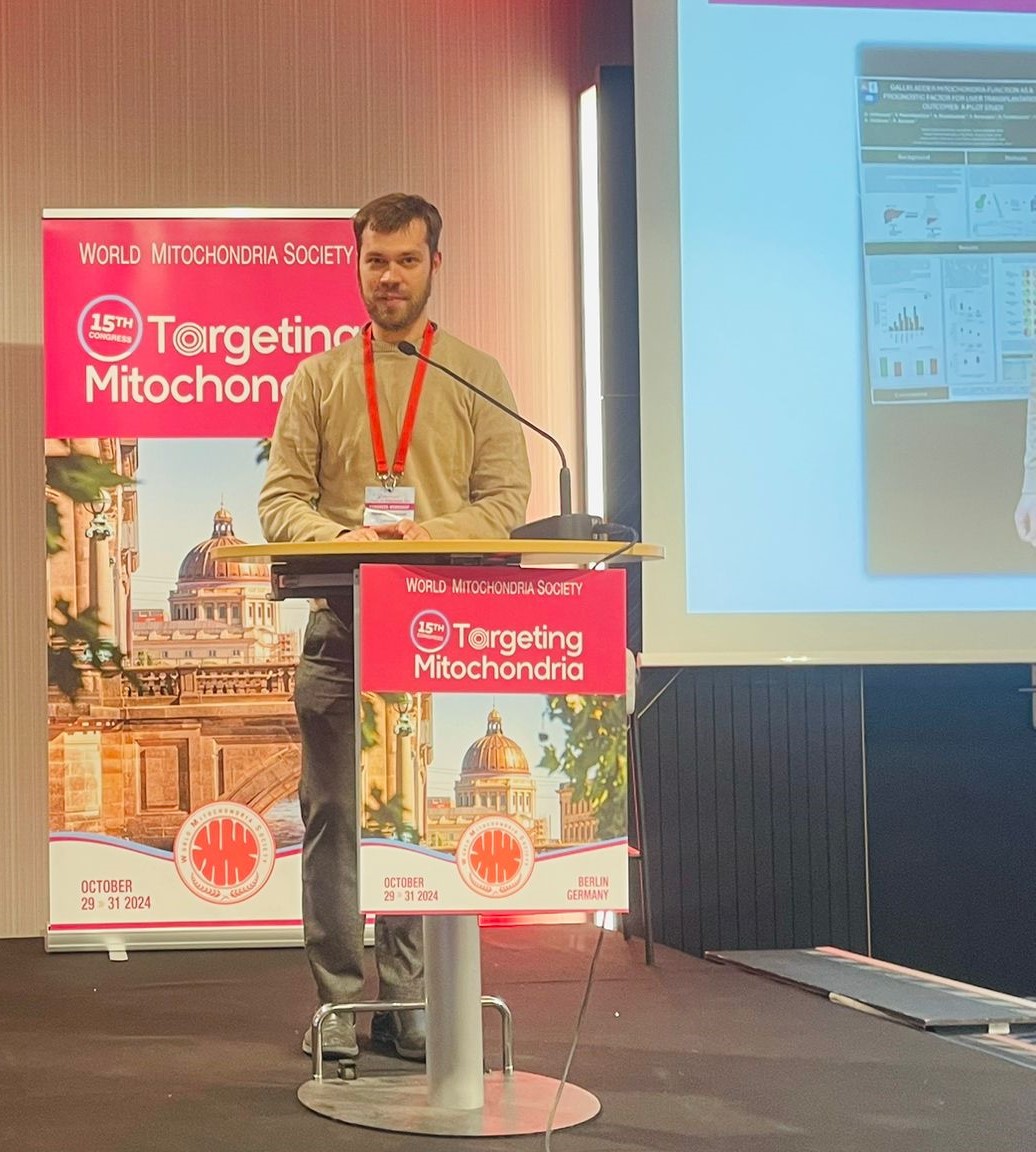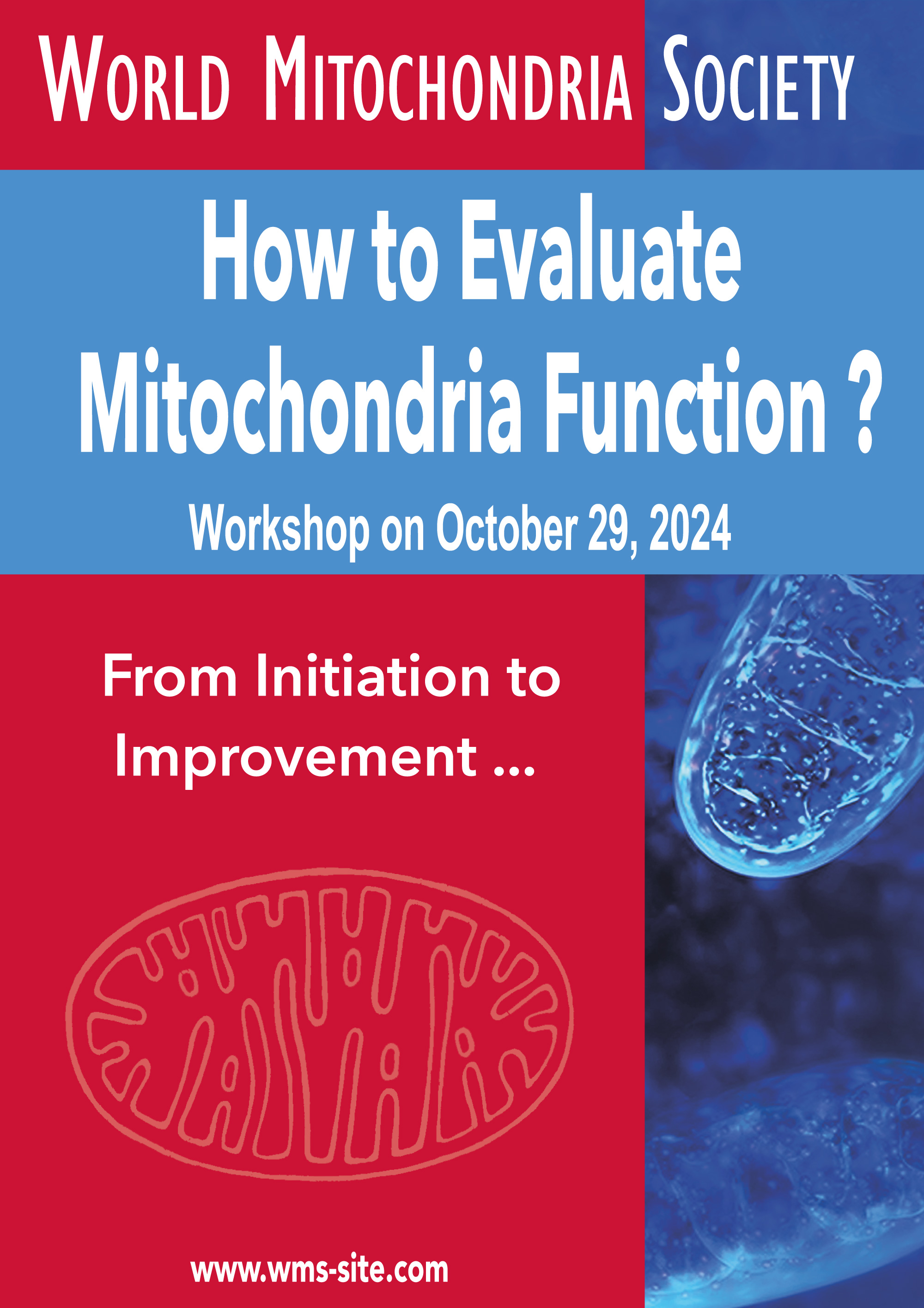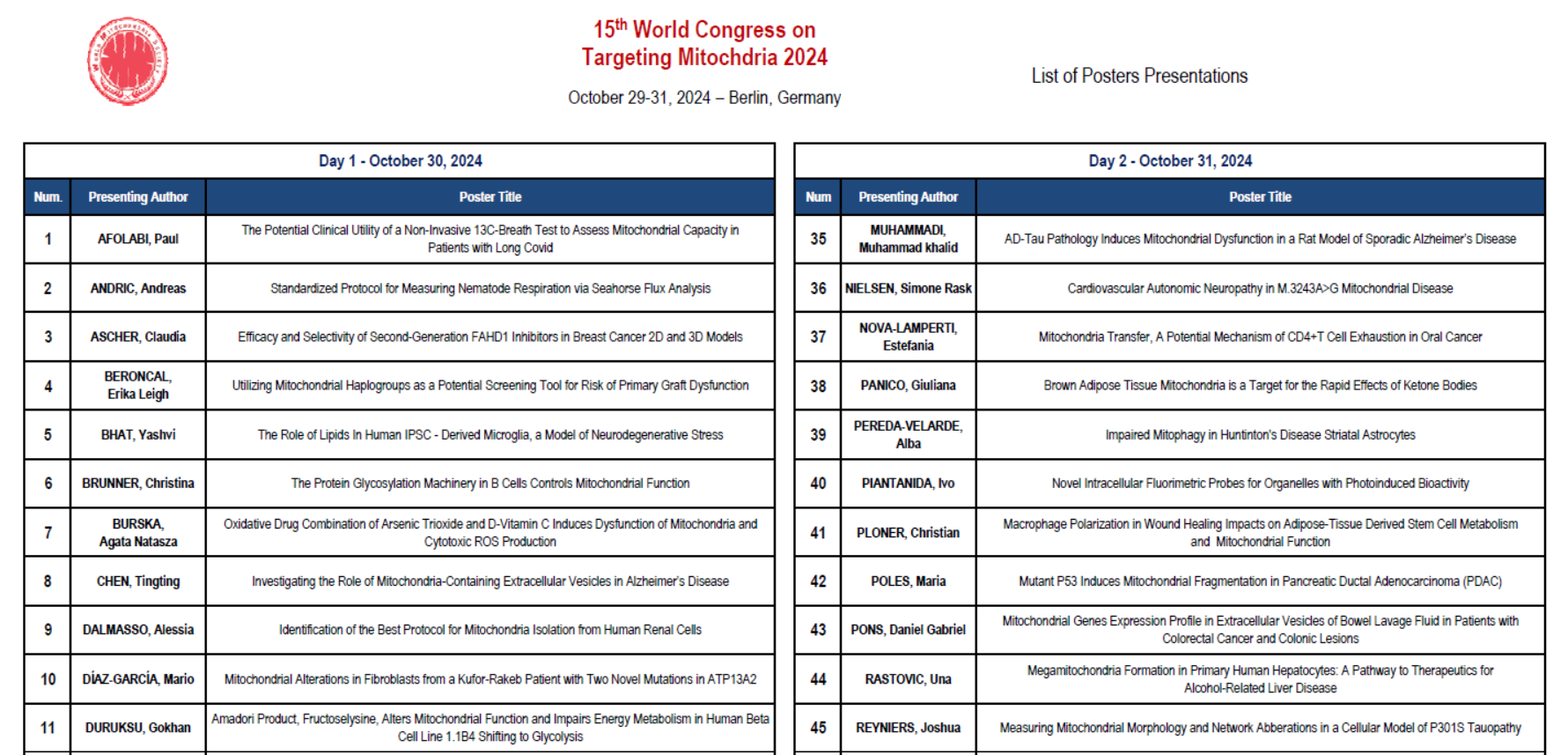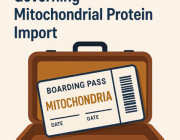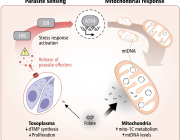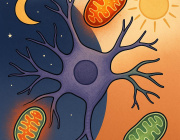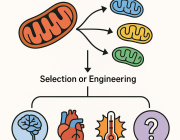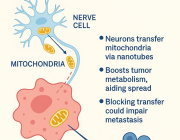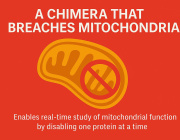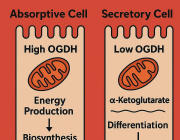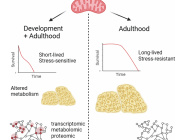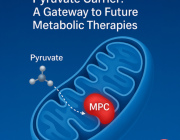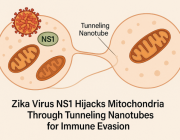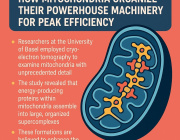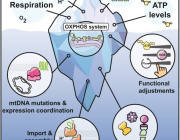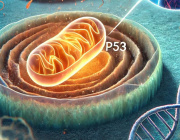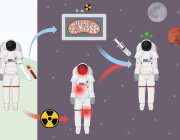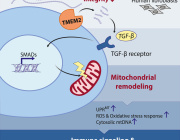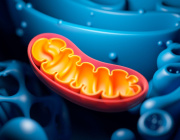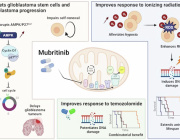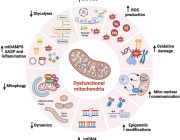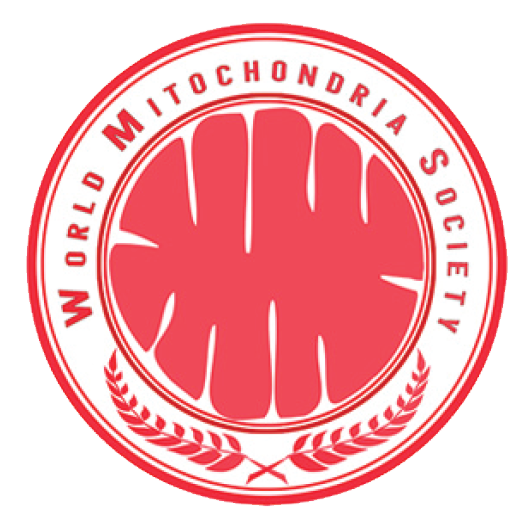Glutamine addiction and mitochondrial stability in tumor cells

The scientific committee of the World Mitochondria Society is honoured to welcoming Dr Vladimir Gogvadze during the 7th edition of Targeting Mitochondria World Congress which will be held in Berlin from October 24 to 26, 2016.
Dr Vladimir Gogvadze, from Karolinska Institutet in Sweden is a specialist in the role of mitochondria in cancer field. During the congress, he will present his recent study related to Glutamine addiction and mitochondrial stability in tumor cells.
For more information: www.targeting-mitochondria.com
Antioxidant anti-diabetic agents and tumor metastasis: An alert by Marvin Edeas
 Few months ago, Dr. Hui Wang from the Department of Endocrinology at Xinqiao Hospital, Third Military Medical University, Chongqing, China, published a strategic study in the journal of Science Translational Medicine, 2016 entitled "NRF2 activation by antioxidant antidiabetic agents accelerates tumor metastasis".
Few months ago, Dr. Hui Wang from the Department of Endocrinology at Xinqiao Hospital, Third Military Medical University, Chongqing, China, published a strategic study in the journal of Science Translational Medicine, 2016 entitled "NRF2 activation by antioxidant antidiabetic agents accelerates tumor metastasis".
According to Marvin Edeas from Institut Cochin, INSERM U1016, University Paris Descartes, we need to highlight the subtility and complexity of antioxidants in health and diseases. Marvin Edeas thinks that this study is one of the most hot study published in 2016 and that the impact of Dr Hui Wang's studies on cancer acceleration is and will stay very important.
In 2009, M. Edeas already commented about the negative effects of antioxidants supplementation: "We don't need to be supplemented by antioxidants each day." From his side, as scientific advisor of WMS and ISANH, Martin Bergö reviewed Dr Wang's paper and clearly demonstrated that antioxidants can accelerate many kinds of cancer.
The impact of antioxidant supplementation on malignant melanoma progression
On the role of ROS and antioxidants in tumor initiation and progression
Anna Azvolinsky from the-scientist commented: Two classes of drugs used to treat type 2 diabetes can increase metastasis of human tumors implanted in mice, according to a study published today (April 13) in Science Translational Medicine. The ability of these two classes of compounds—hypoglycemic dipeptidyl peptidase–4 (DPP-4) inhibitors and antineuropathic α-lipoic acid (ALA)—to accelerate metastasis was due to activation of an antioxidant response pathway that prompted expression of metastasis-promoting proteins, scientists in China have shown. The team’s results add to a growing body of literature highlighting links between antioxidants and the spread of cancer.
“The most important finding is that some antidiabetic agents . . . promote the metastasis of existing cancers by activating [an antioxidant response],” wrote study coauthor Hongting Zheng of the Third Military Medical University in Chongqing, China.
“The data are compelling and the study is consistent with other studies that would argue antioxidant activity can be helpful for cancer cells to metastasize,” said cell biologist Zachary Schafer of the University of Notre Dame who was not involved in the work.
“What most surprised me are the similar effects on so many tumor cell lines [the authors studied],” said Martin Bergö, who studies the effects of antioxidants on the spread of melanoma and lung cancer at the Karolinska Institute in Sweden, but was not involved in the work. He will also present his excellent studies during Paris Redox 2016. www.isanh.net
Zheng and colleagues first screened commonly used antidiabetic drugs—including metformin and insulin analogs—for their abilities to boost proliferation or increase migration of cancer cells in vitro. The researchers showed that DPP-4 inhibitors promoted migration and invasion but not proliferation of melanoma, hepatic, colon, breast, lung, and ovarian human cancer cell lines.
In mice, these drugs resulted in greater dissemination of transplanted human liver and colon tumor cells as well as increased micrometastases compared to animals with the same tumors that received no antidiabetic drugs. Additional in vitro experiments suggested that the DPP-4 inhibitors’ effects on tumor cell migration were associated with the compounds’ abilities to reduce oxidative stress of cancer cells: the drugs reduced reactive oxygen species (ROS) and increased glutathione, an endogenous antioxidant. Adding a glutathione synthesis inhibitor to the cancer cells in addition to a DPP-4 inhibitor prevented the tumor cells from migrating, the researchers shows.
To understand how these compounds act on cellular oxidative stress pathways, the researchers zeroed in on the transcription factor nuclear factor E2–related factor 2 (NRF2), which they found to be activated by DPP-4 inhibitor treatment, both in cell culture and in mice. Five different DPP-4 inhibitors all activated NRF2 in vitro. When the researchers knocked down NRF2 in DPP-4 inhibitor–treated colon and a liver cancer cell lines, they saw a reduction in both tumor cell migration and in the expression of metastasis-associated proteins.
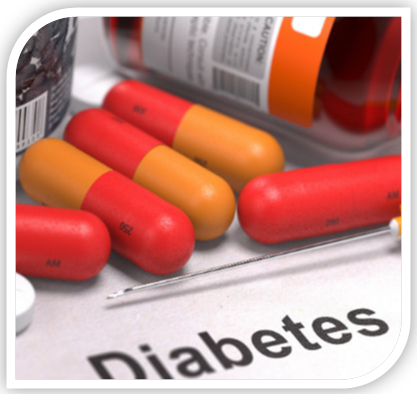 The researchers saw a similar effect in vivo. Mice inoculated with NRF2 knockdown cells had fewer DPP-4 inhibitor–induced metastases. NRF2 also influenced metastasis independent of any diabetes drug treatment, the researchers reported. Activation of the transcription factor promoted the expression of metastasis proteins and cell migration in culture, and pharmacological activation of NRF2 in mice increased micrometastases.
The researchers saw a similar effect in vivo. Mice inoculated with NRF2 knockdown cells had fewer DPP-4 inhibitor–induced metastases. NRF2 also influenced metastasis independent of any diabetes drug treatment, the researchers reported. Activation of the transcription factor promoted the expression of metastasis proteins and cell migration in culture, and pharmacological activation of NRF2 in mice increased micrometastases.
Another known NRF2 activator, ALA—used to treat diabetic neuropathy—had similar effects as the DPP-4 inhibitors studied, both in vitro and in vivo.
Analyzing primary and metastatic tumor expression data, the team found that metastatic samples were more likely to have increased NRF2 expression, and that NRF2 expression correlated with lymph node metastasis.
Previous studies have shown that NRF2 can be activated by oncogenes, allowing tumors to quench ROS that can impede their growth. Yet whether other drugs with antioxidant activity work by a similar mechanism, and whether cancer cells themselves also use other mechanisms to maintain an antioxidant state, are open questions, Schafer noted.
The next step is to study tumor metastasis in diabetic mice, which “will more adequately reflect the current clinical application of antidiabetic drugs,” Zheng wrote in an email.
“Antioxidants and drugs that activate NRF2 do not cause cancer,” Bergo stressed. “Rather, they help healthy cells stay healthy and they help cancer cells stay healthy and allow them to spread in the body.”
H. Wang et al., “NRF2 activation by antioxidant antidiabetic agents accelerates tumor metastasis,” Science Translational Medicine, doi:10.1126/scitranslmed.aad6095, 2016.
Targeting microbiota-mitochondria inter-talk: Microbiota controls mitochondria metabolism stated by Marvin Edeas
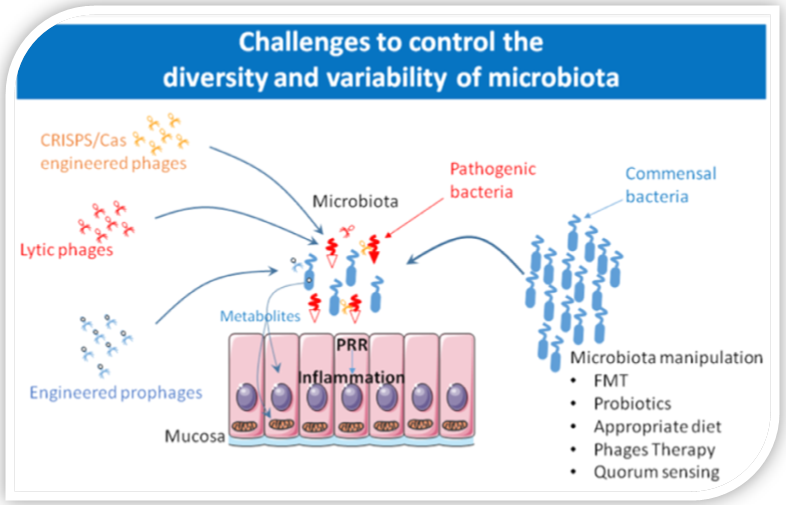 Marvin Edeas from Cochin Institute-INSERM U1016, CNRS UMR8104, Department of Cancer, Development and Reproduction / Inflammation, Oxidative stress and Cellular Proliferation Team at University Paris Descartes published a recent paper titled "Microbiota-mitochondria inter-talk: consequence for microbiota-host interaction".
Marvin Edeas from Cochin Institute-INSERM U1016, CNRS UMR8104, Department of Cancer, Development and Reproduction / Inflammation, Oxidative stress and Cellular Proliferation Team at University Paris Descartes published a recent paper titled "Microbiota-mitochondria inter-talk: consequence for microbiota-host interaction".
Marvin Edeas stated: This is the first time that we demonstrated the intriguing relationship between microbiota and mitochondria. We are at the beginning and in the next years, we will elucidate how they communicate together and how they control our metabolism in health and diseases.
New discoveries in metagenomics and clinical research have highlighted the importance of the gut microbiota for human health through the regulation of host immune response and energetic metabolism. Microbiota interact with host cells in particular by intermingling with the mitochondrial activities. This mitochondria – microbiota cross-talk is intriguing because mitochondria shares a lot of common structural and functional features with prokaryotic world. Several studies reported correlation between microbiota quality and diversity and mitochondrial function. The mitochondrial production of Reactive Oxygen Species plays an important role during the innate immune response and inflammation and is often target by pathogenic bacteria. Data suggest that excessive mitochondrial ROS production may affect ROS signaling induced by microbiota to regulate gut epithelial barrier. Finally, microbiota released metabolites that can directly interfere with mitochondrial respiratory chain and ATP production. Short Chain Fatty Acids have beneficial effects on mitochondrial activity. All these data suggest that microbiota target mitochondria to regulate its interaction with the host. Imbalance of this targeting may results in pathogenic state as observed in numerous studies. The challenge to find new treatment will be to find strategies to modulate the quality and diversity of microbiota rather than acting on microbiota metabolites and microbiota related factors.
References:
Saint-Georges-Chaumet, Y., Edeas, M. Microbiota-mitochondria inter-talk: consequence for microbiota-host interaction. Pathog Dis. 2016 Feb;74(1)
Peltier, E., Attaf, D., Saint-Georges-Chaumet, Y., Edeas, M. Cell. Mol. Biol. 2015; 61 (4): 121-124
Weissig, V. and Edeas, M., Mitochondrial medicine Vol. I & Vol II - Preface. Methods Mol Biol. 2015, 1264 - 1265
The Volume II of Mitochondrial Medicine by Volkmar Weissig and Marvin Edeas is now available
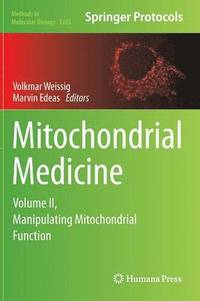 After the publication of the first volume "Mitochondrial Medicine: Volume 1 - Probing Mitochondrial Function", Volkmar Weissig and Marvin Edeas, as chairmen of the World Mitochondria Society, edited an second book: "Mitochondrial Medicine: Volume 2 - Manipulating Mitochondrial Function"
After the publication of the first volume "Mitochondrial Medicine: Volume 1 - Probing Mitochondrial Function", Volkmar Weissig and Marvin Edeas, as chairmen of the World Mitochondria Society, edited an second book: "Mitochondrial Medicine: Volume 2 - Manipulating Mitochondrial Function"
Concerning Mitochondrial Medicine: Volume 2 - Manipulating Mitochondrial Function:
As the first volume, this expert volume covers an interdisciplinary and rapidly growing area of biomedical research comprising genetic, biochemical, pathological, and clinical studies aimed at the diagnosis and therapy of human diseases which are either caused by or associated with mitochondrial dysfunction. It dedicates itself to showcasing the tremendous efforts and the progress that has been made over the last decades in developing techniques and protocols for probing, imaging, and manipulating mitochondrial functions. Mitochondrial Medicine: Volume II, Manipulating Mitochondrial Function describes techniques developed for manipulating and assessing mitochondrial function under general pathological conditions and specific disease states. Written in the highly successful Methods in Molecular Biology series format, chapters include introductions to their respective topics, lists of the necessary materials and reagents, step-by-step, readily reproducible laboratory protocols, and tips on troubleshooting and avoiding known pitfalls.
Volkmar Weissg and Marvin Edeas highlited the strategic role of mitochondria in health and disease, but they also opened a new window to how to evaluate & to manipulate mitochondrial function.
More than 70 chapters were published by Springer in the two volumes.
For more information about Volume 1, please click here.
For more information about Volume 2, please click here.
Volkmar Weissig and Marvin Edeas updated and renewed an edition for 2017 and discussed the contributors and targets during the 7th World Congress on Targeting Mitochondria that was held in Berlin on October 24-26, 2016.
For more information about the annual Targeting Mitochondria meeting: www.targeting-mitochondria.com
Final agenda of Targeting Mitochondria 2016 World Congress
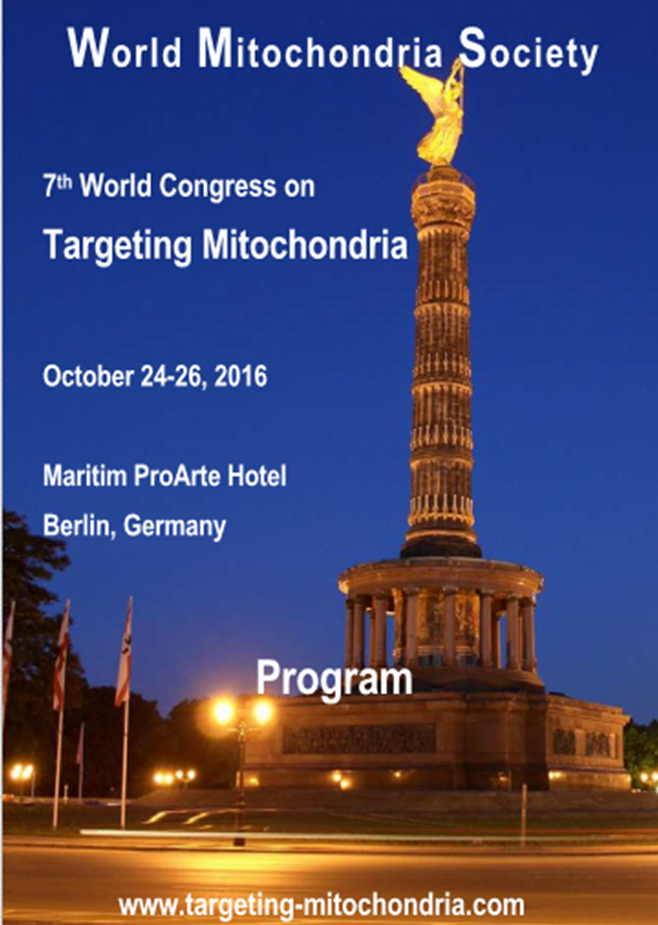 The scientific committee of the World Mitochondria Society published the final agenda of Targeting Mitochondria 2016 including the short oral presentations selected.
The scientific committee of the World Mitochondria Society published the final agenda of Targeting Mitochondria 2016 including the short oral presentations selected.
To access to the final agenda, please follow this link.
An excellent book to read by Marvin Edeas and Volkmar Weissig: three-volumes Mitochondrial Medicine
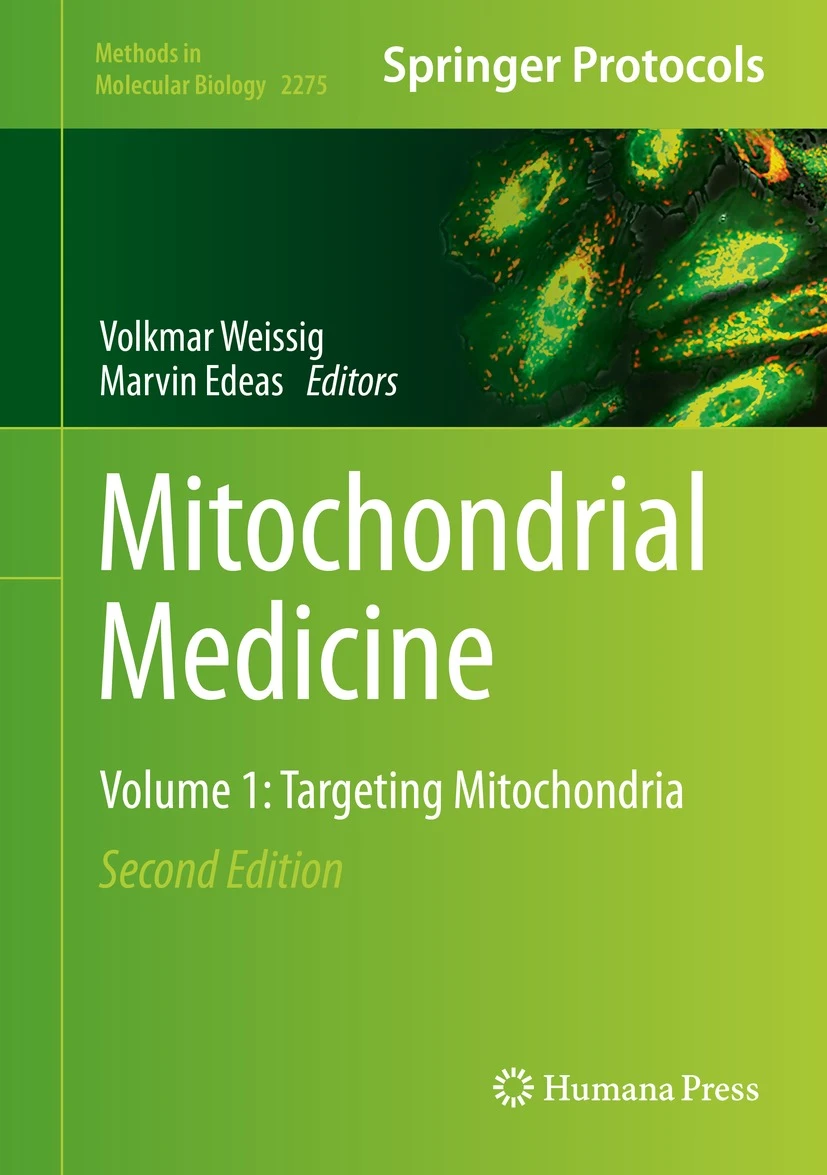 Springer published in 2015 two books edited by Volkmar Weissig and Marvin Edeas, as chairmen of the World Mitochondria Society:
Springer published in 2015 two books edited by Volkmar Weissig and Marvin Edeas, as chairmen of the World Mitochondria Society:
- Mitochondrial Medicine: Volume 1 - Targeting Mitochondria
- Mitochondrial Medicine: Volume 2 - Assessing Mitochondria
- Mitochondrial Medicine: Volume 3 - Manipulating Mitochondria and Disease - Specific Approaches
The first volume of Mitochondrial Medicine covers an interdisciplinary and rapidly growing area of biomedical research comprising genetic, biochemical, pathological, and clinical studies aimed at the diagnosis and therapy of human diseases which are either caused by or associated with mitochondrial dysfunction. It dedicates itself to showcasing the tremendous efforts and the progress that has been made over the last decades in developing techniques and protocols for probing, imaging, and manipulating mitochondrial functions.
Mitochondrial Medicine: Volume I - Targeting Mitochondria focuses on methods being used for the assessment of mitochondrial function under physiological conditions as well as in healthy isolated mitochondria. Written in the highly successful Methods in Molecular Biology series format, chapters include introductions to their respective topics, lists of the necessary materials and reagents, step-by-step, readily reproducible laboratory protocols, and tips on troubleshooting and avoiding known pitfalls. Comprehensive and practical, Mitochondrial Medicine provides an essential source of know-how and inspiration to all researchers who are fascinated by this tiny organelle that seems so clearly to control the life and death of a single cell and whole organisms alike.
Volkmar Weissg and Marvin Edeas highlighted in these three volumes the strategic role of mitochondria in health and disease, but they also opened a new window to how to evaluate and to manipulate mitochondrial function.
38 chapters were published by Springer in this first volume.
For more information about Volume 1, please click here.
For more information about Volume 2, please click here.
For more information about Volume 3, please click here.
Volkmar Weissig and Marvin Edeas will update and renew an edition and discuss the contributors and targets during the 16th World Congress on Targeting Mitochondria that will be held in Berlin on October 22-24, 2025.
For more information about the annual Targeting Mitochondria meeting: www.targeting-mitochondria.com
Marvin Edeas highlights the impact of glycation in health and medicine
 Dr Marvin Edeas, from Cochin Institute-INSERM U1016, CNRS UMR8104, Department of Cancer, Development and Reproduction / Inflammation, Oxidative stress and Cellular Proliferation Team, University Paris Descartes, wish to share with you many strategic questions about the important impact of glycation in health and diseases.
Dr Marvin Edeas, from Cochin Institute-INSERM U1016, CNRS UMR8104, Department of Cancer, Development and Reproduction / Inflammation, Oxidative stress and Cellular Proliferation Team, University Paris Descartes, wish to share with you many strategic questions about the important impact of glycation in health and diseases.
The field of interest of Dr Marvin Edeas is to study the relationship between mitochondria and microbiota (Pathog. Dis, 2016)
According to Dr Edeas: Actually, we investigate in clinical study many factors who can affect this intriguing relationship and may alter the Mitochondria-Microbiota Homeostasis such as oxidative stress, redox modulators and inflammation. We look to reinforce and protect mitochondria to provide the adequate energy and respect also the quality and diversity of gut microbiota.
The advanced glycation end products is one strategic target in our study. We try to clarify How they affect mitochondria and microbiota homeostasis ? There effects on oxidative stress, Redox status, genes expressions, inflammation, metabolism, ATP production and how they shape the gut and skin microbiota ?
During the 2 days of glycation 2016, we will highlight the following points:
- Can AGE inhibitors will be a potential strategy for the prevention of lifestyle-related diseases such as diabetic complications ?
- Can AGE inhibitors be used as a pharmaceutical drugs or dietary supplements?
- What is the importance and level of contribution of food-derived advanced glycation end products to the body pool of AGEs ?
- Can they increase oxidative stress, modulate redox signaling pathway, affect genes expression ?
- What is the impact on Mitochondria and cellular metabolism ?
- What is the impact on our gut microbiota ? Can AGEs affect the diversity and quality of our microbiota ?
- The inhibition of advanced glycation end-products by daily meals is myth or reality?
What is next ?
You can share with us your opinion, though and questions which I can diffuse to the scientific committee.
Marvin Edeas, Chairman of Glycation 2016 Conference
Microbiota-mitochondria inter-talk: consequence for microbiota-host interaction.
The 6th edition of WMS Targeting Mitochondria was a huge success
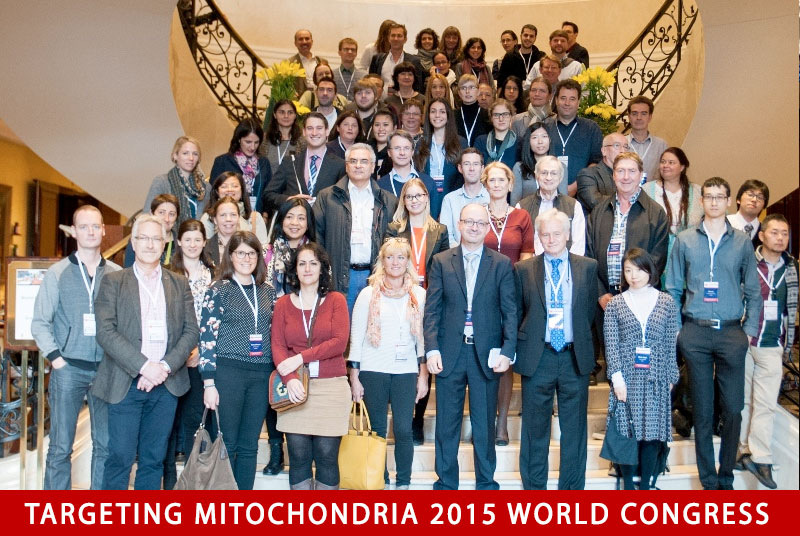
The 6th WMS World Congress on Targeting Mitochondria was held on October 28-30, 2015 at Hotel Ritz Carlton, Berlin. This sixth edition was a huge success gathering more than 430 attendees, coming from different flieds: academics, clinicians, industrials... and from 37 countries.
The Awards for Short Oral & Poster Presentations were discerned during Targeting Mitochondria World Congress
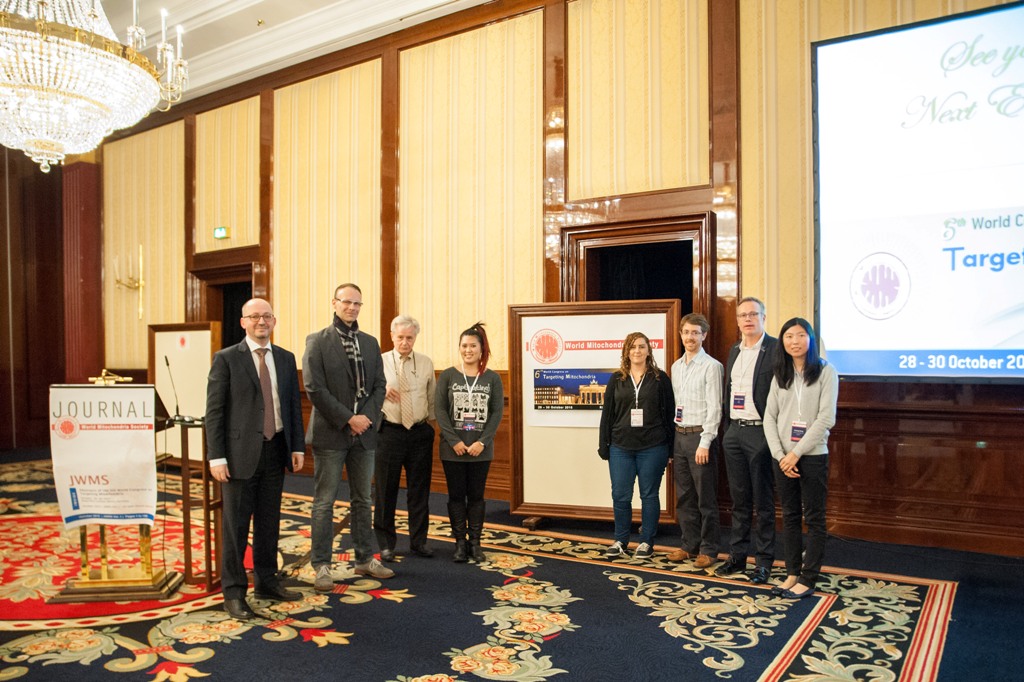
On behalf of the Scientific Committee, we congratulate all scientists for their short oral & poster presentations during Targeting Mitochondria 3-days congress.
The Scientific Committee discerned different awards:
The Scientific Contribution Award was discerned to Pr Martin Bergö from Sahlgrenska Cancer Center, Sweden for his researches about antioxidants in cancer.
More information by clicking here.
3 Awards for short oral presentation were discerned to:
- Dr Yuning Hong from University of Melbourne, Australia, for his presentation about Novel Fluorescent Probes for Visualizing Cell Structures and Function
- Dr Martin Picard from Columbia University, USA for his presentation about Inter-organelle communication via specialized mitochondrial synapse
- Dr Sébastien Bolze from Poxel, France for his strategic presentation about Imeglimin, a new mitochondria-targeted agent for type 2 diabetes treatment
2 awards were discerned for the best Poster Presentations:
- Mrs Ifat Cohen-Erez, from Ben Gurion University, Israel for her poster about Co-assemblies of the Anionic Polypeptide γ-PGA and Cationic β-sheet Peptides for Drug Delivery to Mitochondria
- Dr Genevieve Syn from Telethon Kids Institute, USA, for her poster presentation about Toxoplasma Gondii infection results in disruption of the host mitochondria.
If you would like to access to these abstracts and all the abstracts presented during the congress, you can order by abstracts book by clicking here.
For more information about Targeting Mitochondria World Congress: www.targeting-mitochondria.com
Antioxidants cause malignant melanoma to metastasize faster: Pr Martin Bergö was awarded by WMS Committee
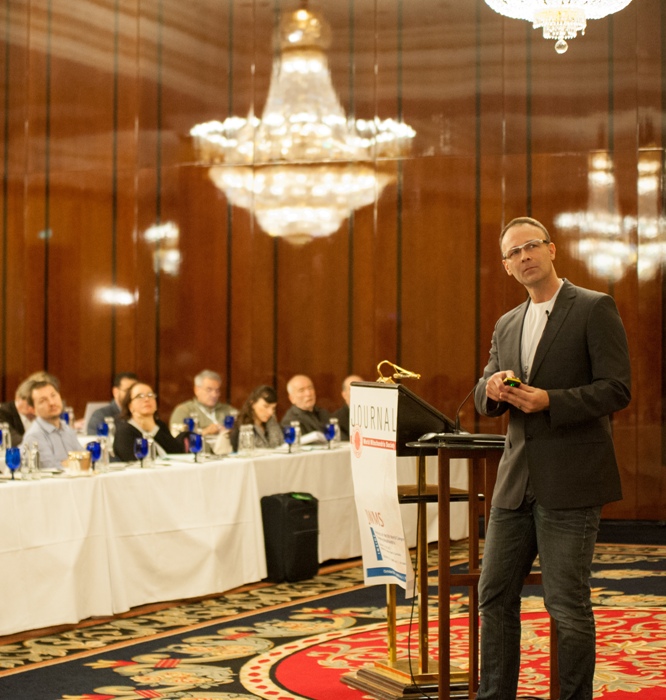 Pr Martin Bergö, from Sahlgrenska Cancer Center in Sweden gave a strategic talk about the impact of antioxidants supplementation on malignant melanoma progression during Targeting Mitochondria World Congress 2015 which was awarded by the scientific committee of the World Mitochondria Society.
Pr Martin Bergö, from Sahlgrenska Cancer Center in Sweden gave a strategic talk about the impact of antioxidants supplementation on malignant melanoma progression during Targeting Mitochondria World Congress 2015 which was awarded by the scientific committee of the World Mitochondria Society.
Pr Bergo's team has found that antioxidants can double the rate of melanoma metastasis in mice. The results reinforce previous findings that antioxidants hasten the progression of lung cancer. According to Professor Martin Bergö, people with cancer or an elevated risk of developing the disease should avoid nutritional supplements that contain antioxidants.

According Pr Bergo: "Cancer is a genetic disorder driven by oncogenic mutations, and DNA damage caused by reactive oxygen species (ROS) is part of the underlying mechanism. Since ROS levels are kept in check by antioxidants, a widely accepted dogma is that dietary supplements containing high concentrations of antioxidants protect against cancer. However, clinical trials have not supported this view, and some even showed that antioxidants increase cancer risk".
For more information about Targeting Mitochondria World Congress: www.targeting-mitochondria.com
For more information about Pr Bergo's study, please follow this link.
The World Mitochondria Society awarded Poxel for its results about Imeglimin, a new mitochondria-targeted agent for type 2 Diabetes treatment
POXEL SA, a biopharmaceutical company developing innovative drugs to treat type 2 diabetes today presented some preclinical data on Imeglimin, the Company’s first-in-class oral anti-diabetic agent, at the 6th World Congress on Targeting Mitochondria held October 28-30, 2015, in Berlin, Germany.
Imeglimin has been proven to have a beneficial effect on both insulin sensitizing and insulin secretion defects in type 2 diabetes. The new data demonstrate the drug candidate’s positive impact on the mitochondrial respiratory chain, providing critical insights to Imeglimin’s molecular mechanism of action. “These results clearly demonstrate Imeglimin’s innovative mechanism of action and illustrate the benefits of targeting the mitochondria to treat type 2 diabetes,” said Sébastien Bolze, Ph.D., EVP Non-Clinical Development and CSO of Poxel. ”Our data confirm again that Imeglimin’s profile is unique among current anti-diabetic agents.”
About Poxel
Poxel uses its unique development expertise in metabolism to advance a pipeline of truly novel products currently focused on type 2 diabetes. Our first-in-class lead product, Imeglimin, targeting mitochondrial dysfunction, has successfully completed Phase 2 development in the US and EU and has entered clinical development in Japanese subjects. We are advancing our second program, PXL770, a direct AMPK activator, through clinical proof-of-concept. We will generate further growth through strategic partnerships and pipeline development.
Berlin will host the largest conference dedicated to Mitochondria
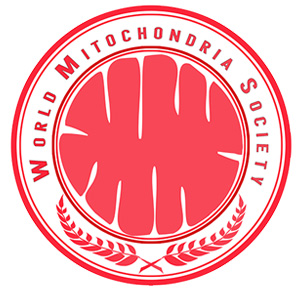
6th WMS Congress on Targeting Mitochondria
WMS Workshop on How to Evaluate Mitochondria Function & Dysfunction?
October 28-29-30, 2015 - Hotel Ritz Carlton, Berlin
The WMS scientific committee announced the publication of the final agenda and the list of abstracts accepted for oral and poster presentation.
To access to the program, please follow this link.
Who is attending the sixth WMS congress?
Berlin will host an elite group of academic and industrial experts from leading life sciences, pharmaceutical, cosmetics and biomarkers evaluation companies seeking to exchange knowledge and share ideas ranging from basic science to latest discoveries and innovations around of mitochondria.
To access to the list of universities and companies attending the congress, please follow this link.
The scientific committee of WMS will present the JWMS Journal during Berlin conference.
The Editorial Board of JWMS will be selected among speakers and members of WMS. You can submit your paper online.
We look forward to welcoming you in Berlin.
Volkmar Weissig
World Mitochondria Society
www.targeting-mitochondria.com
Who will attend Targeting Mitochondria World Congress 2015 from Industries & Academics?
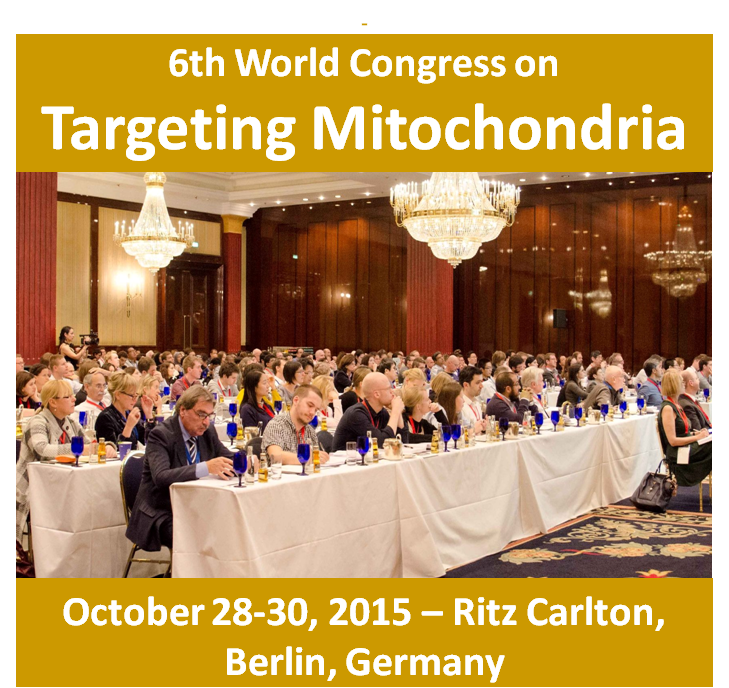
The sixth edtition of the World Congress on Targeting Mitochondria will gather academics and industrial leaders in the field of mitochondria research during three days (October 28 to 30) at Ritz Carlton, Berlin.
Among the industrial participants:
Neurovive, Seahorse, Photonics Healthcare, Mitologics, Glaxosmithkline, Unifarco, Bayer Pharma, Poxel, Dainippon Sumitomo Pharma, Novartis Institute for Biomedical Research, Thermo Fisher Scientific, Novartis Institutes for Biomedical Research, Selcia, Sanofi, Daiichi Sankyo, Biomedical Centre Speyer, Astellas Pharma Europe, Pierre Fabre Dermo-Cosmetique...
Among the academic participants:
Harbin Medical University, Universidad Nacional Autonoma De Mexico, Institute of Biotechnology, Université de Sherbrooke, Columbia University, Instituto de Bioquimica Vegetal y Fotosintesis, Universitätsmedizin Greifswald, University of Veterinary Medicine Vienna, Centre Hospitalier de Luxembourg, Neurologische Universitätsklinik Der Otto-Von-Guericke Universität Magdeburg, University of Pecs, Karolinska Institutet, Leibniz Institut für Neurobiologie, Helmholtz Zentrum München, Moscow Clinical and Research Institute of Pediatrics, University of Aberdeen, L. Boltzmann Institute for Experimental and Clinical Traumatology, CSIR Institute of Genomics and Integrative Biology, University of Tennessee Health Science Center, Ernst Moritz Arndt University of Greifswald,CNRS, Mcgill University, National Inst of Health, University of Leipzig,Universidad Nacional Autónoma de México Unam, Telethon Kids Institute, LCSB, Georgia Regents University, University of Southern California, University of Southampton, University Hospital Essen, Children Hospital Bambino Gesù, Ukh Neurologie, Kings College London, Institute of Liver Studies, Universidad Nacional De Colombia, University of Buenos Aires, Universität Leipzig, Max Planck Institute of Molecular Cell Biology and Genetics, University Leipzig, Aarhus University, Departement of Intensive Care Medicine, Johns Hopkins University, University of Oxford, University of Edinburgh, Chuv-Unil, Department of Pharmaceutical Sciences, College of Pharmacy-Glendale, Midwestern University, University of Warwick, Ulm University, University of Missouri - Kansas City, Beijing Institute for Drug Control, University of Zurich, Fundacion Ramon Dominguez,Polytechnic University of Marche, Max Planck Institute of Colloids and Interfaces, University of Manchester, University of Calgary, Albstadt-Sigmaringen University, Albstadt-Sigmaringen University of Applied Sciences, The University of Liverpool, King's College London, Samsung Medical Centre Ssk University, Weill Medical College of Cornell University, SRUC, Federal State Budgetary Institution "Scientific Centre of Children Health", Friedrich-Alexander University Erlangen-Nürnberg, University Hospital Erlangen, University of Aberdeen, University of Veterinary Medicine, Vienna, INSERM, Fondazione Cuoa, Max Planck Institute of Psychiatry, Midwestern University, University of Edinburgh, Psychiatric Practice, First Faculty of Medicine, Charles University and General University Hospital In Prague, University of Melbourne, Cellex-Idibaps, Mossakowski Medical Research Centre, Pas, University of Toronto, Sapir College, Department of Pathophysiology, Beijing Neurosurgical Institute, Capital Medical University, Beijing Neurosurgical Institute, University College London, Institute of Theoretical and Experimental Biophysics, Russian Academy of Sciences, Pushchino, Russia, Stockholm University, Tokai University, University of Veterinary Medicine, Laboratory of Food and Regulation Biology, Graduate School of Agriculture, Tokai University, Technion-Israel Institute of Technology, Netherlands Institute for Neuroscience, University of Bath, Institute of Neurology/ University Medical Center Ulm, Ludwig Boltzmann Institute for Experimental and Clinical Traumatology, New York University, University Hospital North Norway, University of Helsinki, Wayne State University, University of Warsaw, University of Freiburg, Colorado Mesa University, Ilia State University, Sifa University, Université Perpignan, Universidad De Valencia, Mediterranean Institute for Life Sciences, Martin-Luther University Halle-Wittenberg, The George Washington University School of Medicine, Institute of General Pathology and Pathophysiology...
If you would like to register, please follow this link.
For more information about Targeting Mitochondria World Congress 2015: www.targeting-mitochondria.com
Abstract Submission
Submission Deadline for Short Oral Presentation:
September 30, 2025
Submission Deadline for Poster Presentation:
October 9, 2025
Submission Guidelines:
- Submit abstracts to the Scientific Committee.
- Use the online form for submissions. Abstracts not using this form will not be considered.
- One abstract per registered person.
- For oral submissions: prioritize in-person presentations. Online presentations require prior approval.
- Online poster submissions are accepted.
- No changes after the submission deadline.
- Abstracts cannot be modified post-acceptance.
Abstract Format:
- Title: Max 20 words.
- Text: Max 200 words, divided into Introduction, Materials & Methods, Conclusion.
- Define unusual abbreviations on first use.
- Relate to conference tracks or sessions, and specify the topic.
- Include references (max 3).
- Submit in both Word and PDF formats, prepared in B5 format.
Download abstract format guidelines here in Word or in PDF.
Note that: Abstracts received without formal modalities will not be studied.
Reviewing and selection process
All submissions reviewed by the Scientific Committee, and selection will be based on originality, novelty, and impact (score 1-10).
- Scores 9-10: considered for oral presentation.
- Scores 6-8: accepted for poster presentation.
Important notes
- Preference for in-person short oral presentations.
- E-posters can be accepted.
- Low-quality or off-topic abstracts may be rejected.
Published Abstracts
Accepted abstracts will be published in the conference abstracts book.
Short Oral Presentations
Duration: 7 minutes for their presentation, followed by 3 minutes of Q&A.
Number of slides: 8 Slides (+1)
Content: (1) the aim of the research, (2) materials methods, (3) Results, and (4) conclusion.
Please note that the timing might slightly change according to the final program.
Posters Session
Process: Posters will be presented during the coffee breaks & lunch break
Format: A1 - vertical : 84,1cm height * 59,4cm width
E-Posters (for online posters) must be sent via email to: mitochondria[at]wms-site.com
Mining the gut microbiome for novel mitochondrial therapeutics: A strategic Presentation by Pr Anurag Agrawal
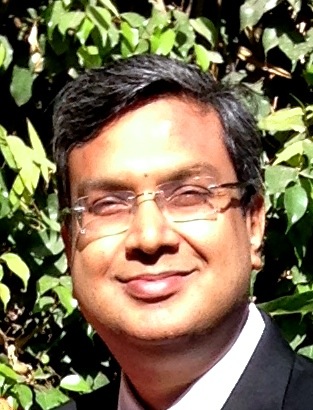
During the 6th World Congress on Targeting Mitochondria, Pr Anurag Agrawal from CSIR Institute of Genomics and Integrative Biology, India will discuss about a strategic topic: "Mining the gut microbiome for novel mitochondrial therapeutics".
He will highlight the following points:
- Mapping the gut microbial reactome to mitochondrial metabolism
- The strange case of PQQ
- Effects of common gut metabolites on mitochondrial function
If you would like to access to the complete program of Targeting Mitochondria 2015: www.targeting-mitochondria.com
More Articles...
- Pr Luis Vitetta, from Sydney University will talk about Reactive oxygen species and their lifelong regulation of the metabolome
- Pr. Neuzil's talk to prerequisite for tumor initiation
- Dr Koopman will present his researchs about live-cell quantification of mitochondrial readouts
- Targeting energy producing metabolic pathways for cancer therapy






